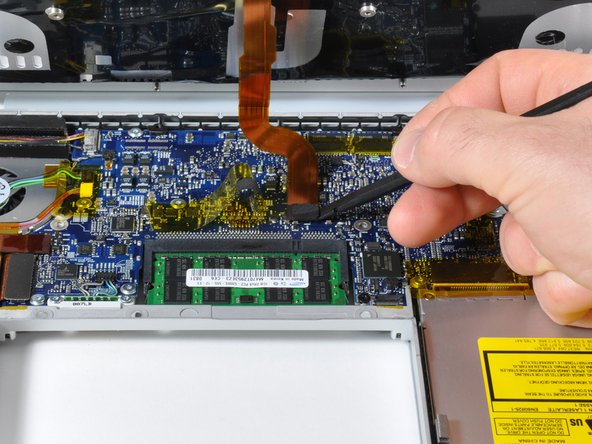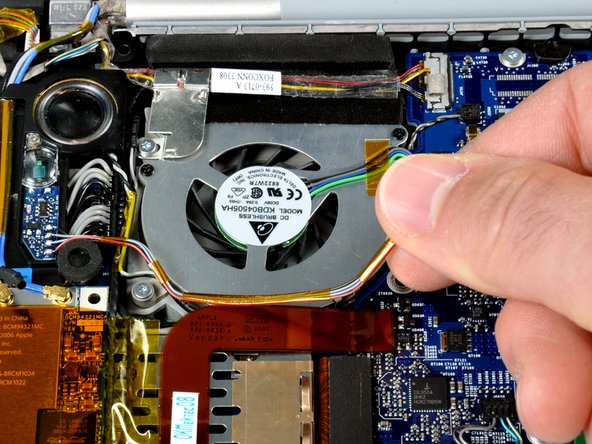Introduction
This detects the light level in the room to adjust the backlit keyboard.
What you need
-
-
Use your fingers to push both battery release tabs away from the battery, and lift the battery out of the computer.
-
-
-
Remove the three identical 2mm Phillips screws from the memory door.
-
Lift the memory door up enough to grip it and slide it toward you, pulling it away from the casing.
-
-
-
Remove the two 2.8 mm Phillips screws in the battery compartment near the latch.
-
-
-
-
Lift up at the rear of the case and work your fingers along the sides, freeing the case as you go. Once you have freed the sides, you may need to rock the case up and down to free the front of the upper case.
-
There are four plastic clips above the DVD slot, and another above and to the left of the IR sensor. These clips can be very difficult to disengage without prying. They can also be difficult to re-engage during reassembly.
-
-
-
Disconnect the left ambient light sensor cable from the logic board by placing a spudger beneath the connector and lifting up.
-
Peel up the left ambient light sensor cable from above the left fan, removing tape as necessary.
-
-
-
Remove the single silver Phillips screw securing the clear plastic shield over the left ambient light sensor.
-
Lift the clear plastic shield off the left ambient light sensor.
-
Use a spudger to pry the left ambient light sensor board out of its housing on the left speaker.
-
Lift the left ambient light sensor board out of the computer.
-
To reassemble your device, follow these instructions in reverse order.
To reassemble your device, follow these instructions in reverse order.
Cancel: I did not complete this guide.
3 other people completed this guide.
2 Comments
Do you know what each wire from the ALS does? Previous owner broke the connector socket off the logic board; now the computer thinks it’s always in maximum ambient light, so the keyboard backlight is disabled. Wondering if I can hardwire 2 pins together on the logic board to make it think it’s in minimum ambient light, so I can control the keyboard backlight manually. Thanks!!
I found a much easier solution: There is a free app called LabTick that allows you to adjust the keyboard illumination regardless of input from the ALS.



















